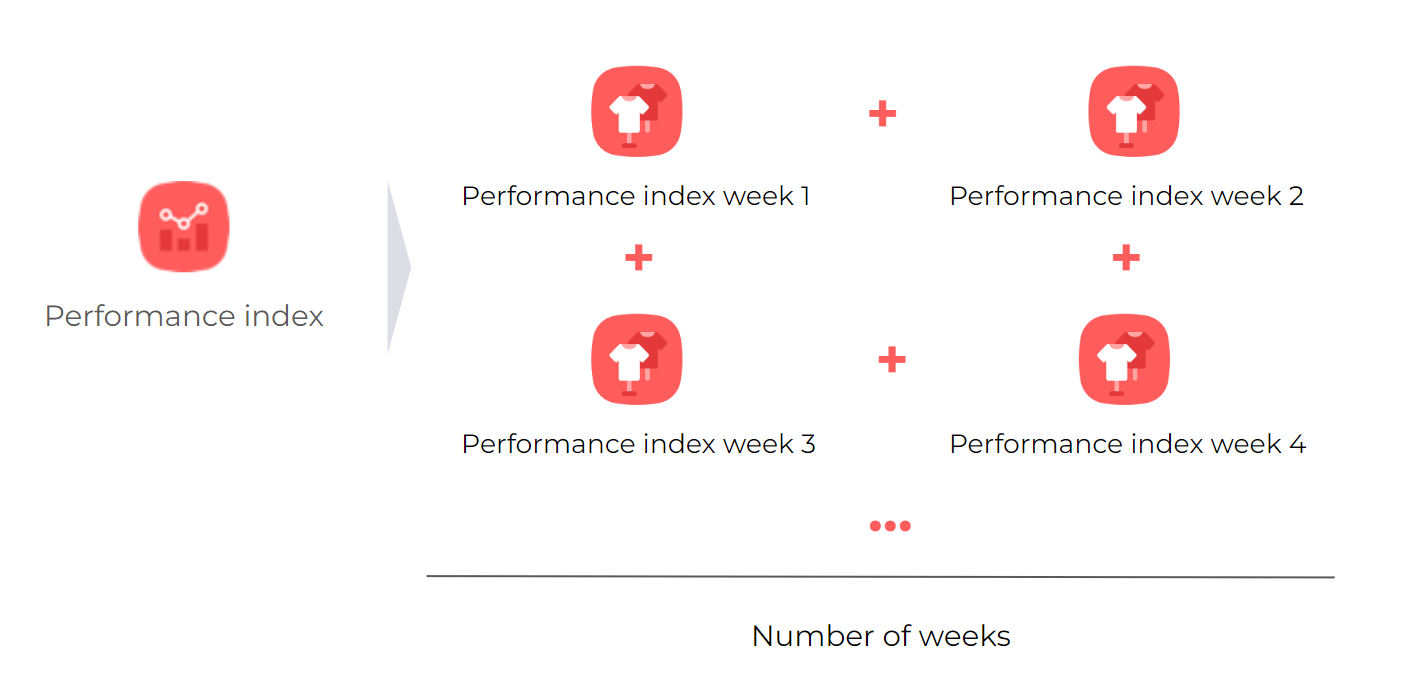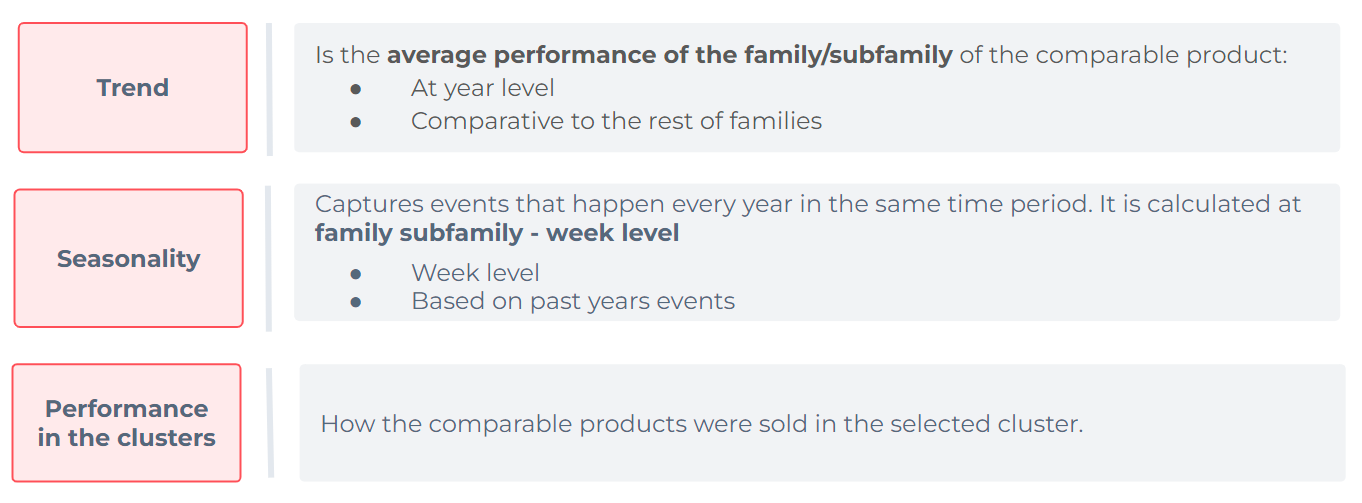Performance index
3. Performance index
The first step to forecast a demand for the new product is to calculate the performance index.
This index is determined by calculating the performance of each comparable product in selected stores on a weekly basis and taking the average of all indexes. This average is then used to contextualize the forecast for the new product.
We use the reference weeks and we cancel the effect of trend, seasonality and clusters.

To cancel the effects of trend, seasonality, and clusters, the effects of different external factors are eliminated for the similar products and then reapplied for the new product.
Nextail generates a seasonality coefficient by week based on the past three years of historical sales data to calculate the most accurate forecast at the subfamily-store level.
The effects of different external factors are canceled for the similar products, and re-applied for the new product

- Seasonality
One of the factors that is re-applied is seasonality to forecast sales for the new product.
Nextail seasonality captures the variation of data generated from recurring events that take place every year during the same time period (ex.: Christmas, Valentines Day)
Nextail generates a seasonality coefficient by week based on the past 3 years of historical sales data to calculate the most accurate forecast at subfamily-store level

For each time period, the data available for each week-store is taken. If in a week, less than 30% of the stores in the cluster do not have enough data, that week is ignored. At least 30 weeks of data are needed to build the seasonality.
If we haven’t got the data at subfamily-store level, we calculate it at family-store level. In case we don’t have enough data at that level, a flat coefficient (1) will be applied until then. Weeks in which markdowns were happening, are also ignored. Finally, seasonality is re-applied to forecast sales for the new product
- We deseasonalize the sales of the comparables in order to erase the effect of the period in which they were marketed.
- We re-seasonalize these sales to take into account the usual behavior related to the period in which the new product will be launched, specific to the sub-family of the planned product and on the calendar weeks corresponding.